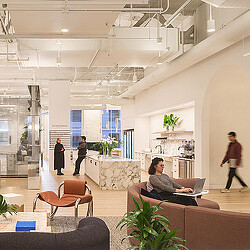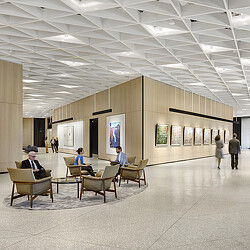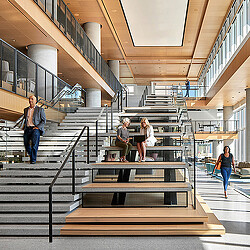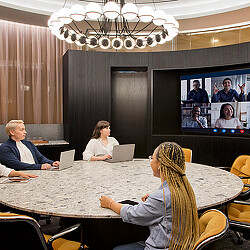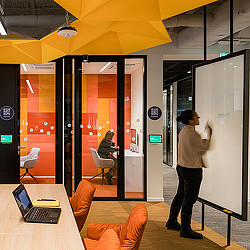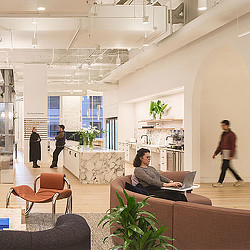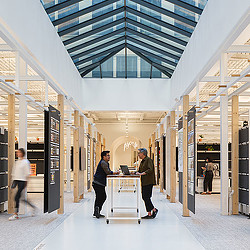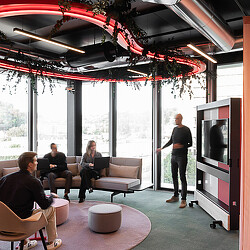The Shift to Extremes:
Rethinking Office Design
Modern offices are increasingly designed with extremes in mind, featuring specialized spaces for both hyper-focus and hyper-collaboration.
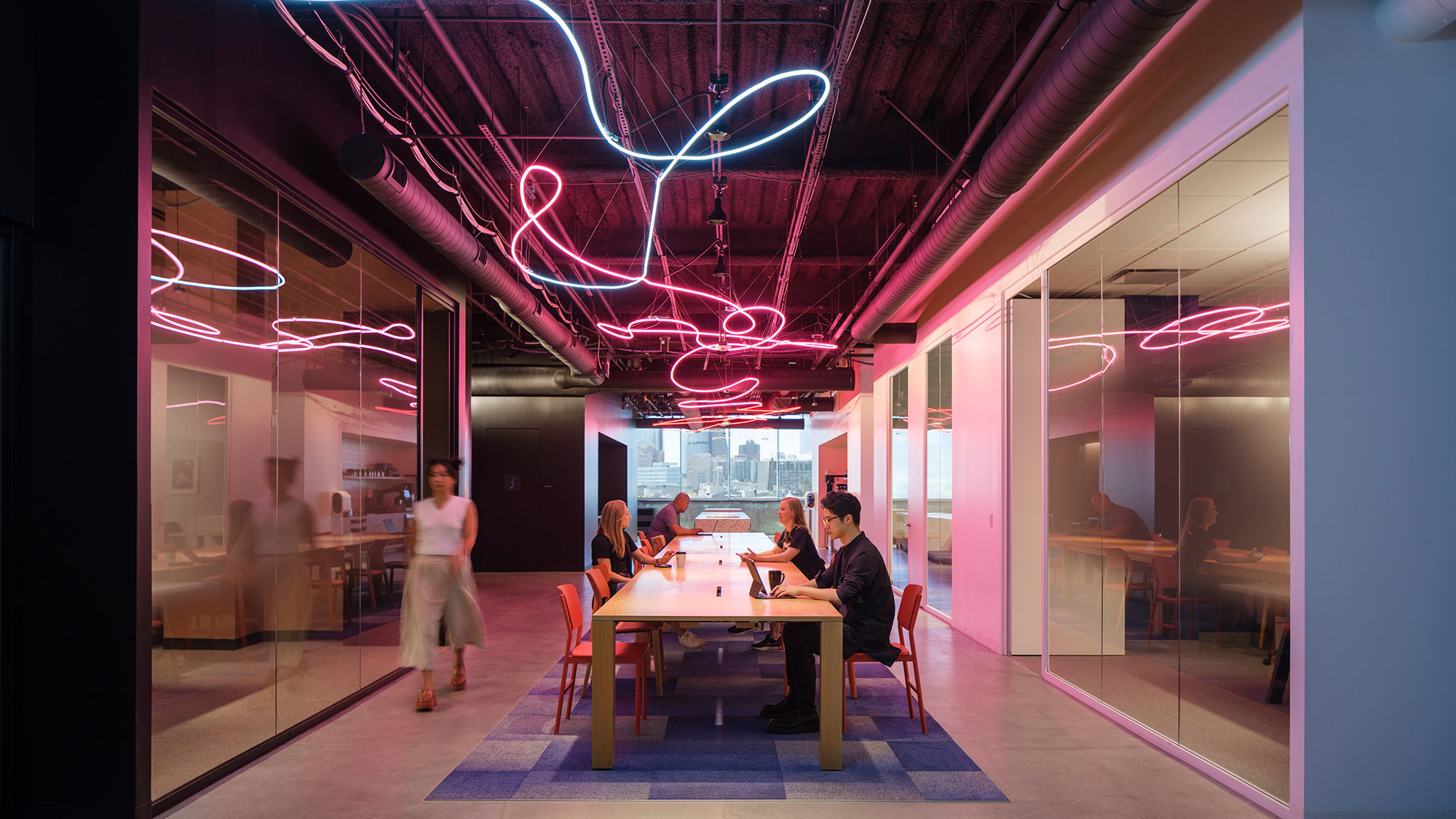
Editor’s note: This article was originally published in Work Design Magazine.
The office is often misunderstood as a space designed for peak productivity, but in reality, it has always been a place of compromise. The traditional office was never meant to be a finely tuned environment for specialized work; rather, it was created to accommodate the broadest range of needs with the least amount of friction.
Take the cubicle, introduced in the mid-20th century. It wasn’t about fostering creativity or deep focus — it was about managing large numbers of workers efficiently in an era obsessed with order, mass production and hierarchical control. The cubicle offered privacy, but it also enforced routine, prioritizing conformity over innovation and connection.
As work culture evolved to prioritize collaboration and transparency, the open office plan emerged as the next supposed evolution in workspaces. It promised to break down the barriers of the cubicle and foster a dynamic, creative work culture. However, even this design was a compromise, intended to foster creativity while still controlling costs and space. Despite its promise, the open office often replicated the problems it sought to solve — noise, distractions and a lack of privacy frequently undermining the collaboration it was supposed to encourage.
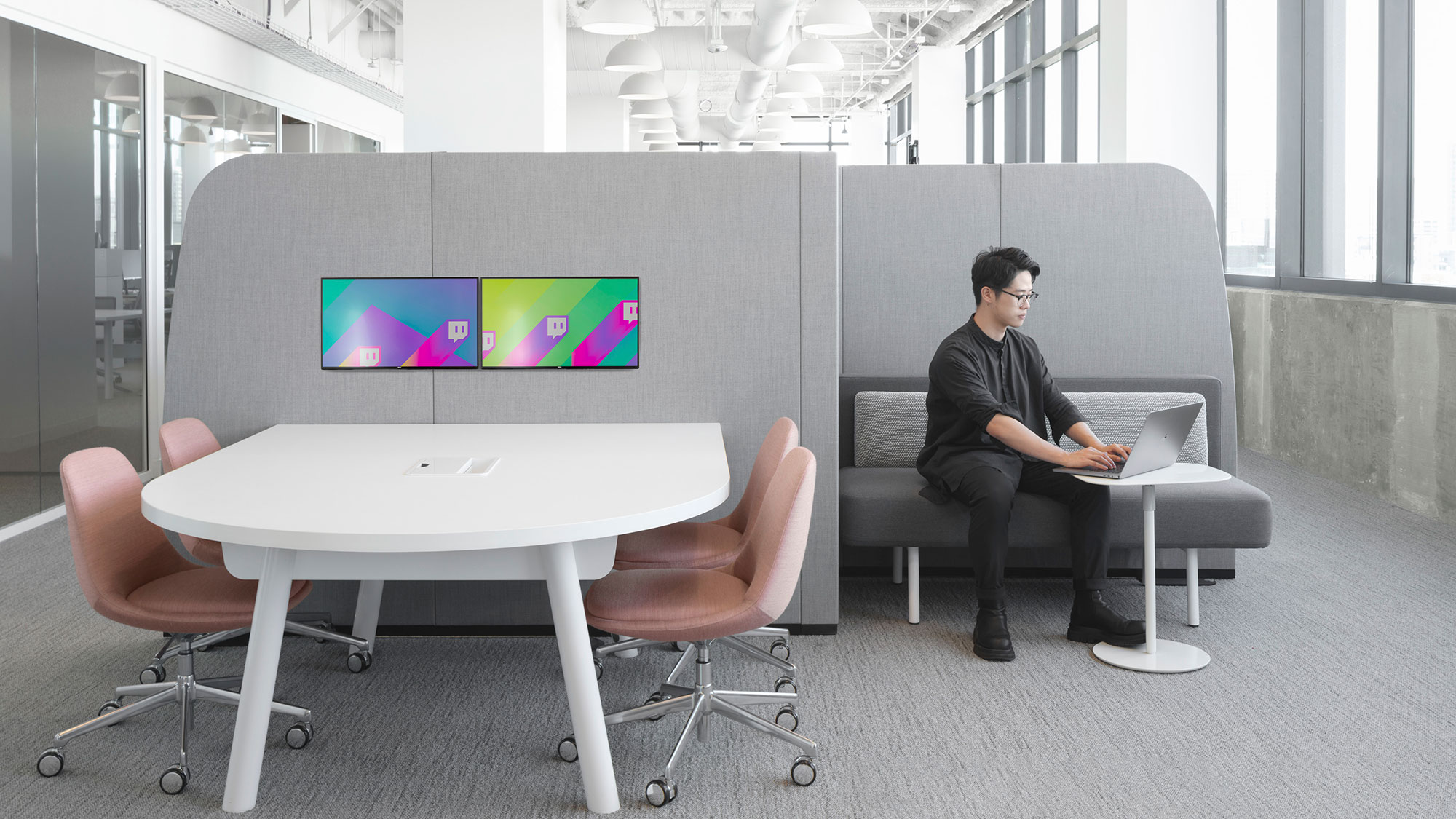
A Shift Toward the Extremes
Societal trends are pushing us toward extremes, leaving the middle ground increasingly abandoned. This shift is evident across various aspects of life, where polarized positions dominate. The overuse of the word “unprecedented” during and after the pandemic highlights this trend, as we focus more on extremes and pay less attention to the moderate, steady forces that once defined the center. As everything increasingly presents itself as a high-stakes moment vying for our attention, the ‘normal’ has no chance — hyper is the new baseline.
Work and the workspace are no exception. As the nature of work has evolved, so too have the demands placed on the office. The once-standardized office environment is increasingly seen as inadequate for supporting the diverse and specialized work modes that modern employees require. This trend is driven by several factors, including the rise of remote work, advances in technology and changing work habits that prioritize flexibility and efficiency.
Moreover, the continued development and integration of data and technology have brought us to a point where we can respond to the needs of office workers in more nuanced ways, enabling work environments that are perfected to the task and the personal needs of the worker.
Two Trends Shaping the Future of Office Design: Hyper-Focus and Hyper-Collaboration
Hyper-Focus
The pandemic revealed a critical insight: many people found themselves significantly more efficient working in personalized, interruption-free spaces at home. This experience underscored the importance of hyper-focus, a concept Cal Newport describes as “Deep Work.” As knowledge work becomes increasingly complex, environments that support intense concentration with minimal distractions are essential.
In response, focus pods, quiet zones, work libraries and noise-cancellation measures have become commonplace in office design to create spaces conducive to focused work. However, Deloitte’s ‘The Edge’ in Amsterdam pushes the envelope even further, demonstrating how advanced technology can facilitate deep focus through hyper-personalized environments.
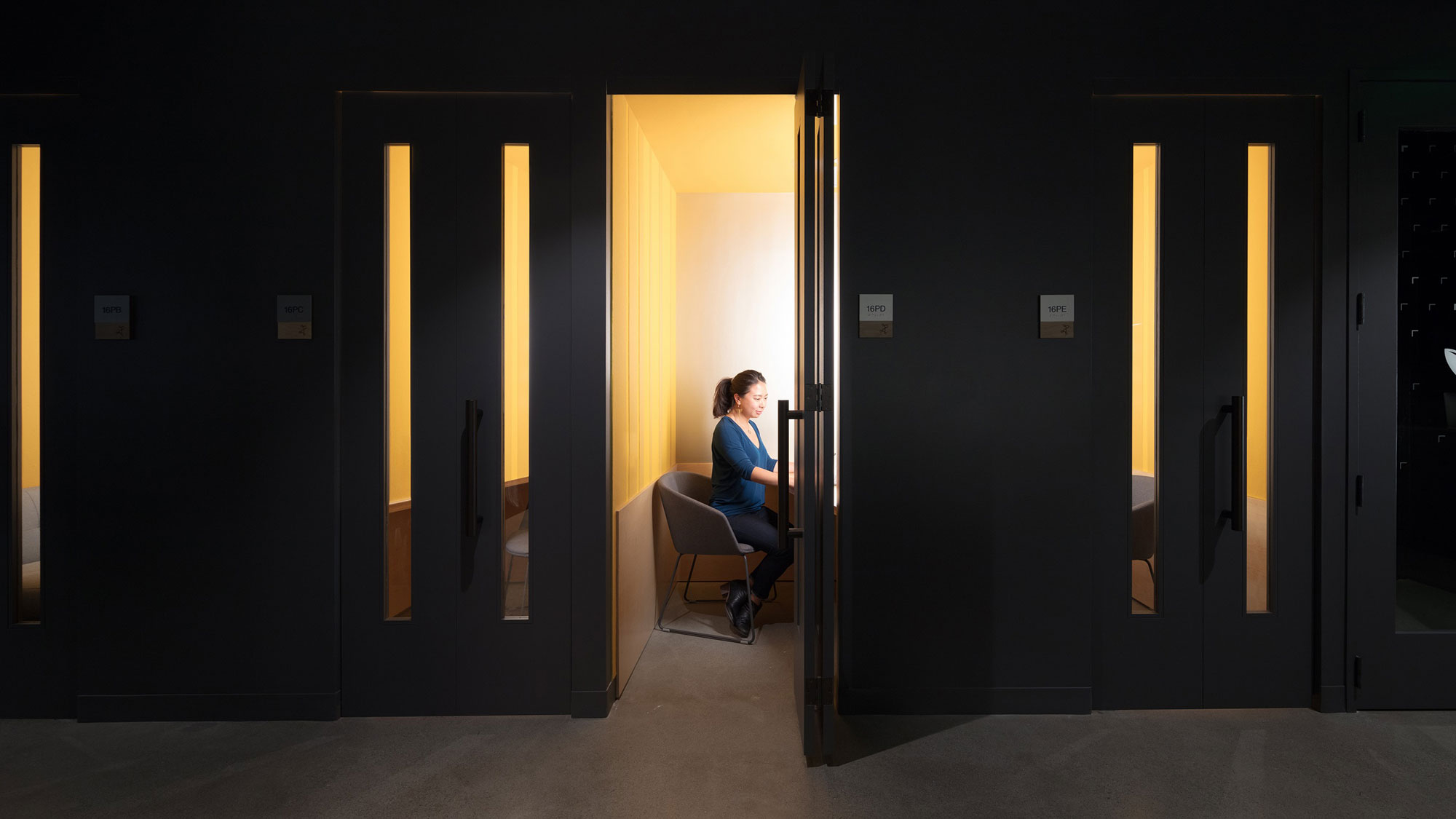
With 30,000 Internet of Things (IoT) sensors, the building continuously monitors and adjusts factors like lighting, temperature, and air quality, creating an optimal environment tailored to each individual’s needs. This ensures that employees can maintain concentration and well-being throughout their workday.
The building’s design further enhances focus by offering a variety of specialized workspaces, including focus rooms, concentration rooms and work booths, all designed to minimize distractions and support deep work. Instead of being tied to assigned desks, employees can choose the most suitable space for their tasks, whether they require seclusion for deep concentration or a quieter corner for uninterrupted work.
The Edge’s mobile app plays a crucial role in this, allowing users to adjust their workspace environment, locate free desks, and even track energy consumption, all of which contribute to creating the perfect conditions for focus. This integration of smart technology and flexible design empowers employees to achieve deep focus in spaces customized to their specific needs, making The Edge an ideal environment for productivity and concentration.
These innovations are not just about comfort — they are about creating spaces that enable workers to reach peak productivity by fostering the kind of hyper-focus that modern work demands.
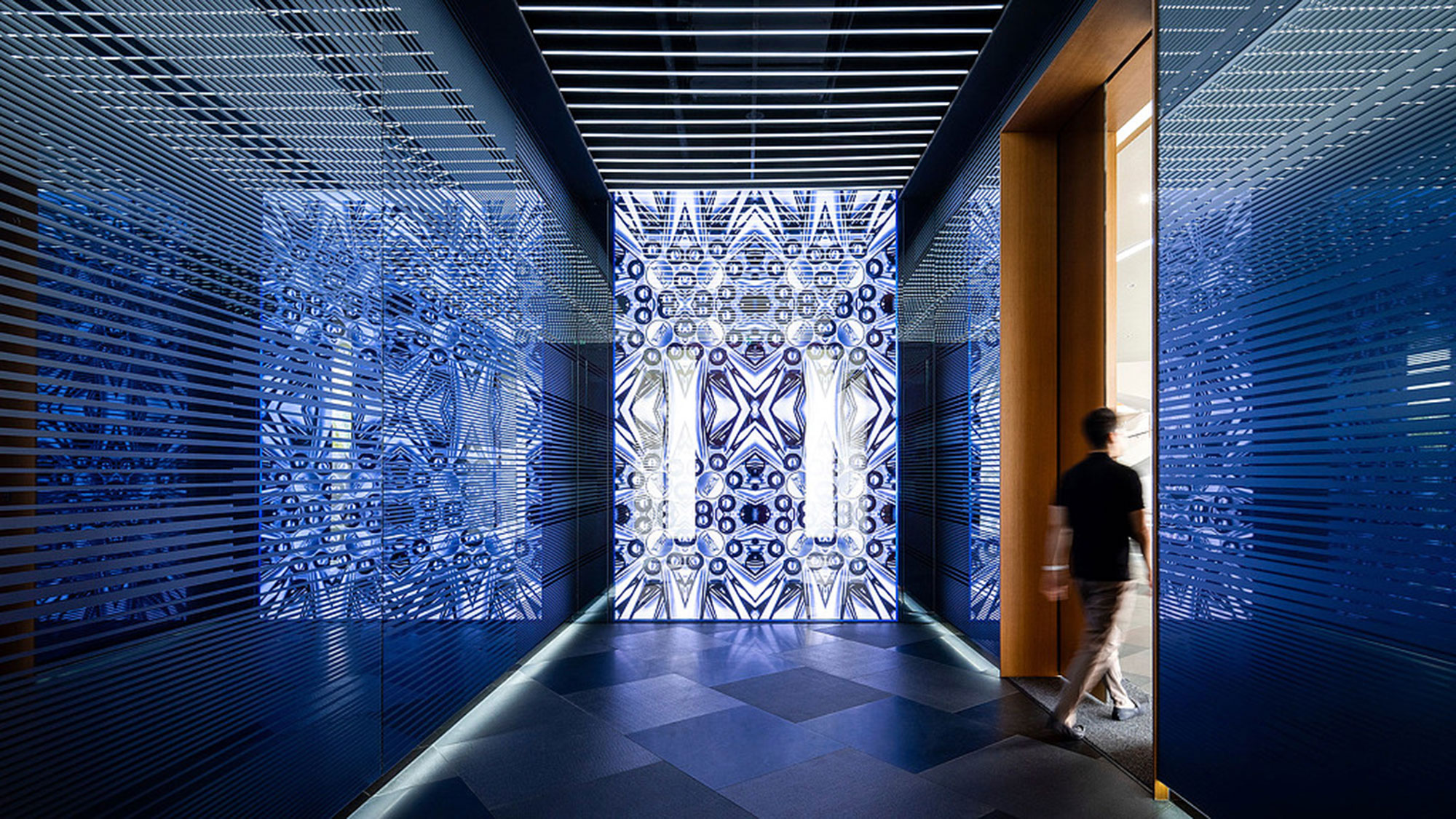
Hyper-Collaboration
On the opposite end of the spectrum is the trend toward hyper-collaboration. As work becomes more interdisciplinary and project-based, the ability to collaborate intensively with others has become crucial. Hyper-collaboration brings together diverse teams in tech-enhanced environments where ideas can be rapidly exchanged, tested, and refined. Advanced communication tools, real-time collaboration software, and immersive technologies like augmented reality (AR) and virtual reality (VR) are central to this trend, enabling seamless teamwork regardless of physical location.
NVIDIA’s headquarters exemplifies how innovative technology can foster a hyper-collaborative environment. Interactive digital displays are placed throughout the workspace, enabling teams to engage with complex data in real time, enhancing brainstorming and speeding up decision-making. These displays allow multiple users to collaborate simultaneously, making the process more dynamic and efficient. Advanced video conferencing systems are seamlessly integrated into the design, ensuring that onsite and remote teams can work together effortlessly, breaking down geographical barriers and enabling global collaboration. The headquarters also features centralized collaboration hubs equipped with the latest AV technology, providing versatile spaces for cross-functional teams to gather, share ideas, and drive innovation. This strategic use of technology ensures that collaboration is not just supported but actively enhanced, making NVIDIA’s headquarters a model for modern, innovation-driven work environments.
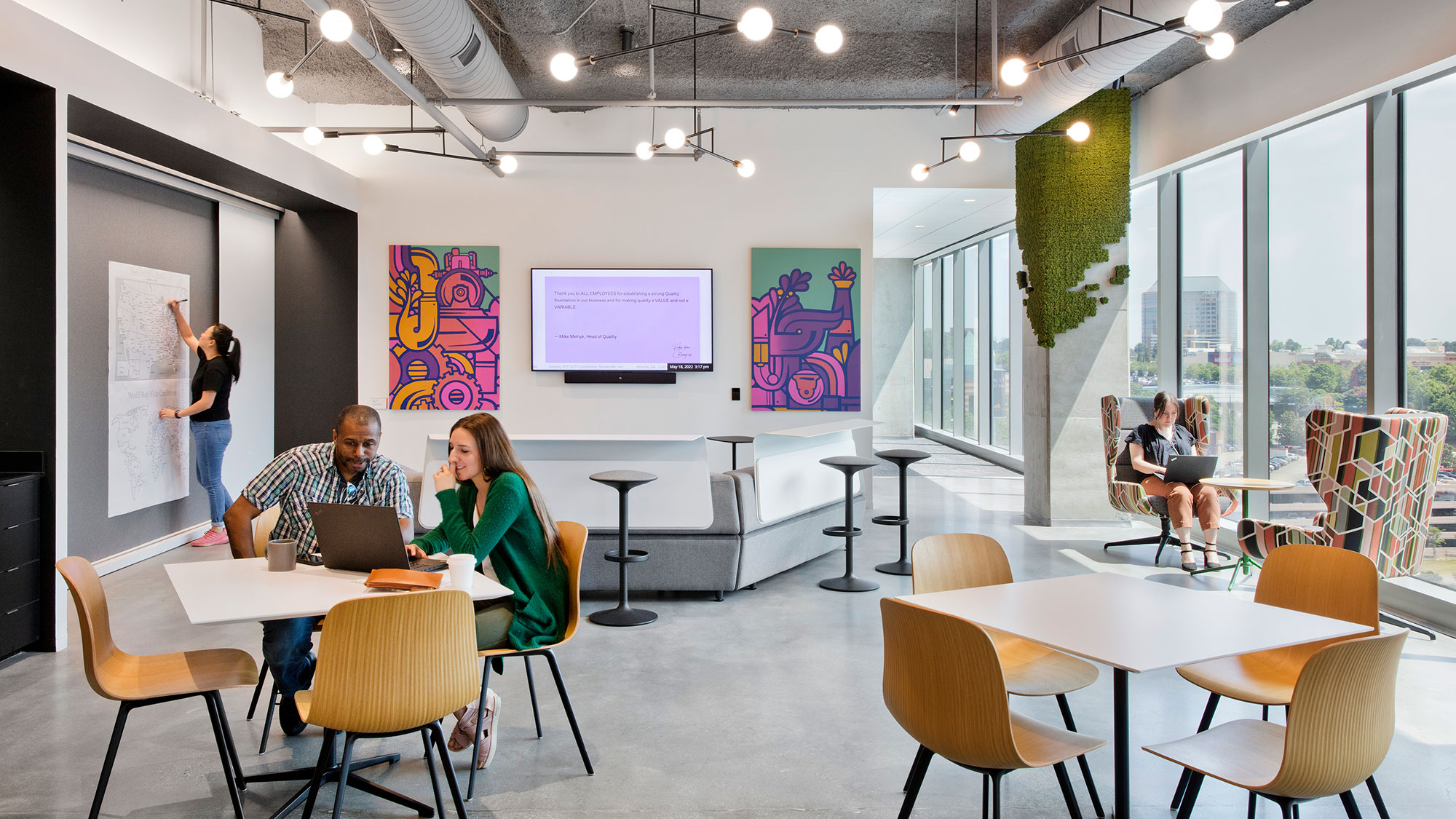
The Move Towards Specialization
Modern offices are increasingly designed with these extremes in mind, featuring specialized spaces for both hyper-focus and hyper-collaboration. This evolution marks a departure from the one-size-fits-all approach, recognizing that the modern workplace demands environments tailored to specific needs. As we move further into this era of extremes, the office will continue to evolve, becoming a dynamic space that meets the extreme demands of contemporary work. The office is no longer merely a common ground; it has become a specialized environment optimized for both deep focus and intense collaboration, driving innovation and productivity in today’s fast-paced, technology-driven world.
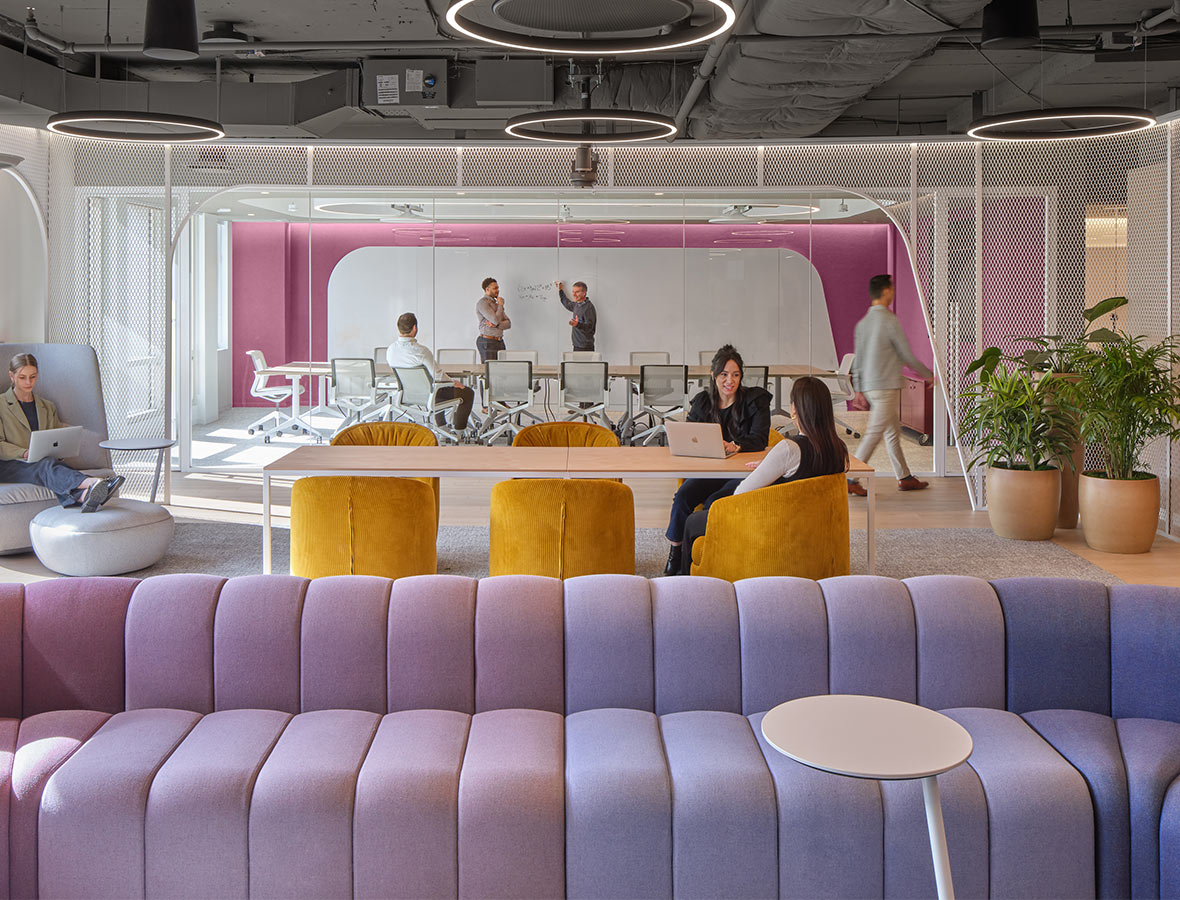
For media inquiries, email .
